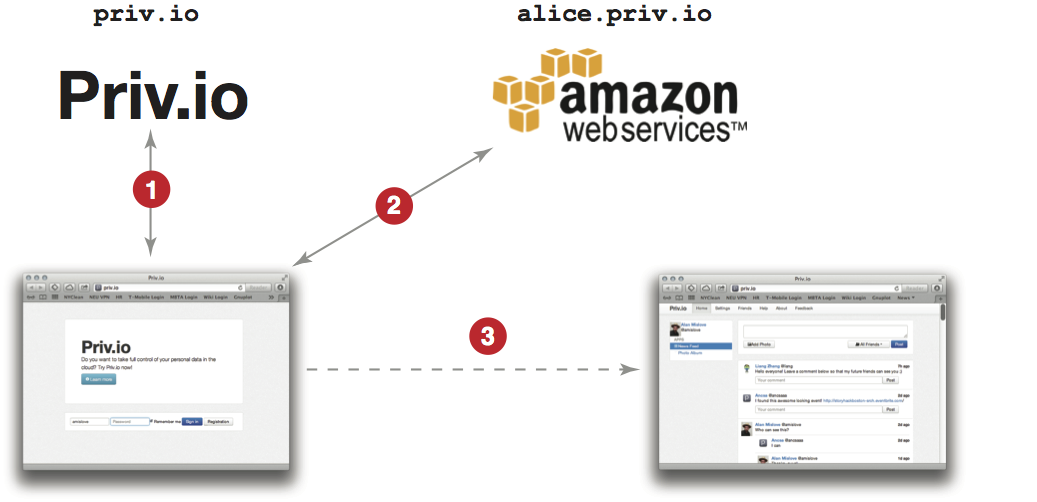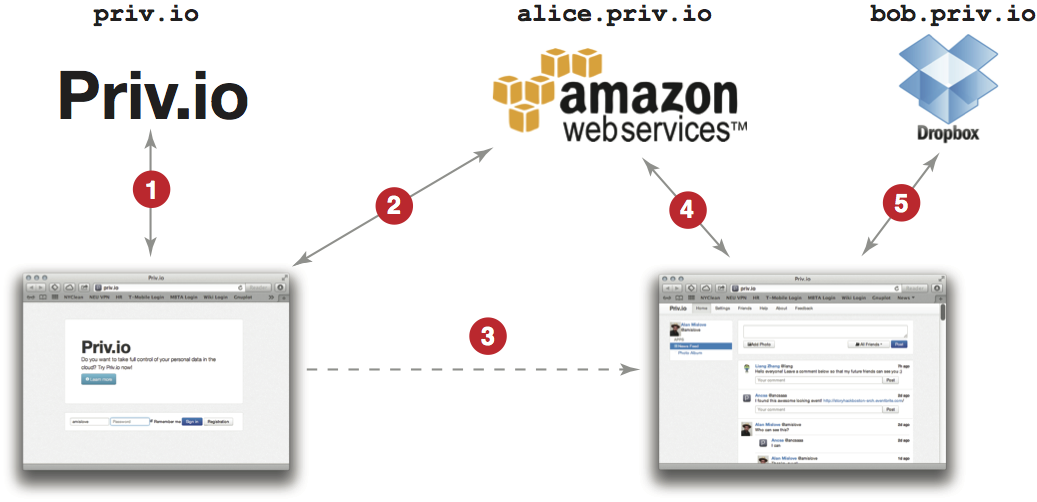- OSNs are popular for content sharing



- Facebook: 300M photos uploaded per day
- Sharing is "FREE" for users
- User does NOT pay for content sharing

- Who funds the service? -- Advertising
- Monetizes your content for ads
- But, we have privacy settings on Facebook!?
Liang Zhang Alan Mislove
Northeastern University
Online social networks
Privacy in OSNs
- Privacy control on OSNs
- Control information flows within the site
- CANNOT keep data private from the provider
- Leads to unintended consequences

- Easy in, (almost) no way out
- e.g., hard to migrate data from Facebook to Google+
- Privacy leakage
- e.g., Facebook data bug leaked 6 million users' info
- Big brother is watching YOU...
- e.g., NSA, GCHQ
- Easy in, (almost) no way out
- Can we protect user privacy from the provider?
Alternative designs
- Encrypt data uploaded to the provider (e.g., Privly, NOYB)
- Require additional software installed, low accessibility
- Transfer cost to OSN providers, not sustainable
- User-hosted servers for private data (e.g., Persona, Vis-à-Vis)
- Expensive for user to host server
- Decentralized system (e.g., PeerSoN, Diaspora)
- Reliability difficult to achieve
- Our insight: Leverage cloud computing to host user content
- Users store encrypted data on cloud provider of choice
- But, how much would it cost?
Using the Cloud
| Storage |
| Bandwidth |
| Requests |
| Computation |
| Storage | $0.095/GB/month for storage |
| Bandwidth | $0.12/GB for outgoing bandwidth |
| Requests | $0.004 per 10,000 GET requests |
| Computation | $14.40 per month for a t1.micro instance |
| Storage | $0.095/GB/month for storage |  |
| Bandwidth | $0.12/GB for outgoing bandwidth |  |
| Requests | $0.004 per 10,000 GET requests |  |
| Computation | $14.40 per month for a t1.micro instance |  |
- If we ignore computation,
- Cost for 99% users is less than $1
- Using real world data (Facebook, Twitter, Flickr)
- More details in paper
Priv.io
- Goal: low cost platform for web services with strong user privacy
- Key insights:
- User provides storage, bandwidth via cloud providers
- Protects privacy, provides control
- Use users' web browsers for computation
- Provides cost-efficient computation
- User provides storage, bandwidth via cloud providers
- Result: Priv.io, a confederated service
- Each user retains control over his/her own data
- Confederated means users are free to leave

Outline
Motivation- Priv.io design
- Security, privacy and limitation
- Evaluation
Sharing on Facebook
Sharing on Priv.io
Priv.io overview
- Social platform for building web apps
- e.g., Google Doc, Facebook, Twitter
- Architecture
- Servers
- Server side support
- User-contracted cloud providers
- Priv.io Core
- Kernel of the system
- Priv.io Applications
- User facing functionality
- Servers
Servers
- Priv.io server
- Bootstraps Priv.io
- Serves static content
- Uses DNS to map cloud providers
- e.g.,
liang.priv.io=>
liang.priv.io.s3.amazonaws.com - Hide users traces
- e.g.,
- Bootstraps Priv.io
- Cloud providers
- Assumption: Accessible with REST API
- Storage
- Two credentials: owner read/write, friends read
- Providers today: Amazon, Google, Azure, Dropbox
Priv.io core
- Run applications
- Ensures security, privacy
- Resource management
- Access user provided resources
- Easy encryption/decryption (ABE, AES)
- Content sharing
- Create, manage friendship
- Access own, friends storage
- Expose services to applications via API
Priv.io application model
Priv.io application
- Implemented in HTML5
- Runs in users' browsers
- Each app gets its own iframe
- Various applications
- Less social interaction: Google doc
- More social interaction: Facebook newsfeed
- Hosting applications
- Applications are served on Priv.io server
- Access via subdomain, e.g.,
newsfeed.app.priv.io
Application: Newsfeed
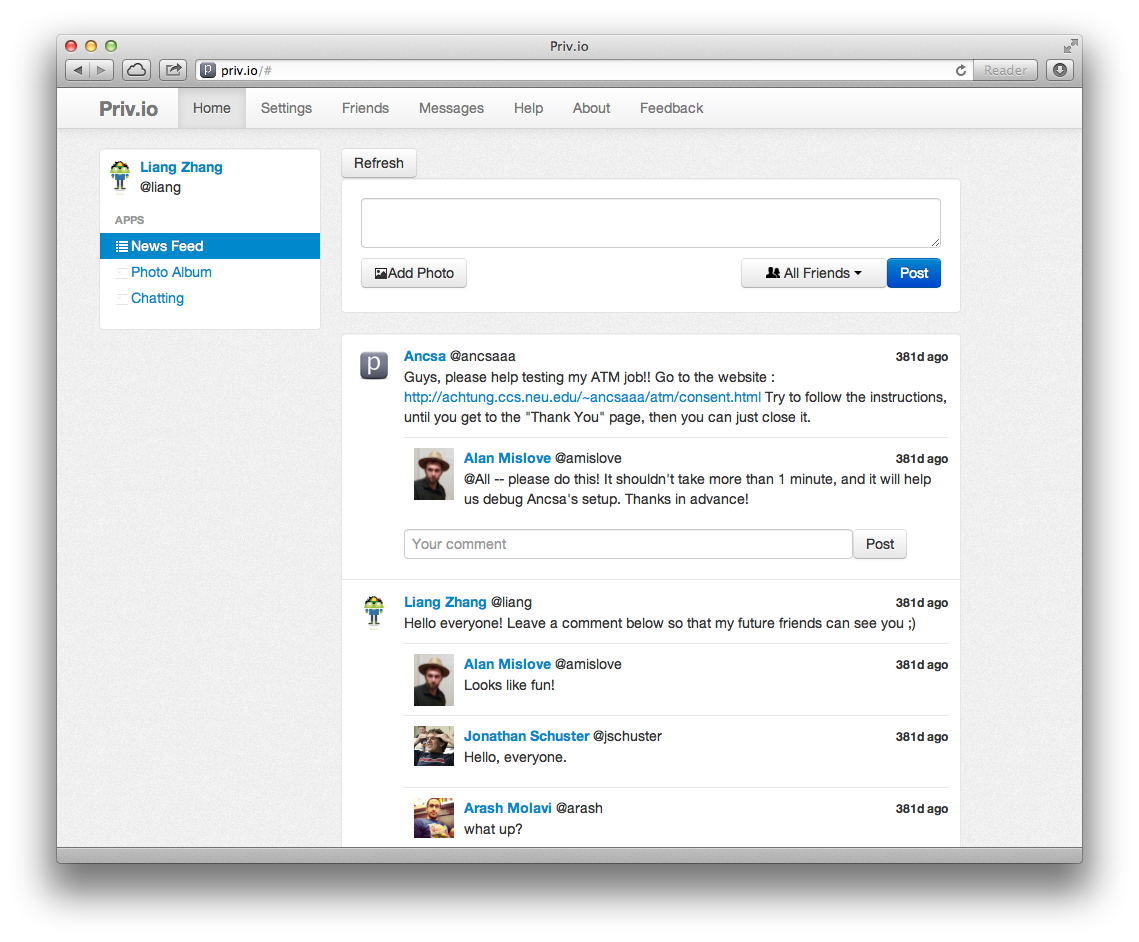
Outline
MotivationPriv.io design- Security, privacy and limitation
- Evaluation
Security: can app bypass API?
Privacy: leak user data?
Limitations
- No global view
- e.g., no global search
- Some can be partially replicated with local view
- e.g., friend suggestion
- Computation only in browser
- Don't have background processes
- Push notification
- Future research
Outline
MotivationPriv.io designSecurity, privacy and limitation- Evaluation
Evaluation overview
- Prototype system
- Supports Amazon SQS and S3
- Runs latest common web browsers (desktop and mobile)
- 5,931 lines of JavaScript
- How much overhead from encryption?
- Microbenchmarks on running time
- AES: 100K object: under 43ms (desktop), 327ms (mobile)
- Provide decent performance
- ABE more expensive, but much less frequent
How's user-perceived performance?
- Load 15 Newsfeed items
- Feed loading time:
- below 515ms (desktop), 5.1s (mobile)
- Comparable to today's OSN services on desktop
How does Priv.io work in practice?
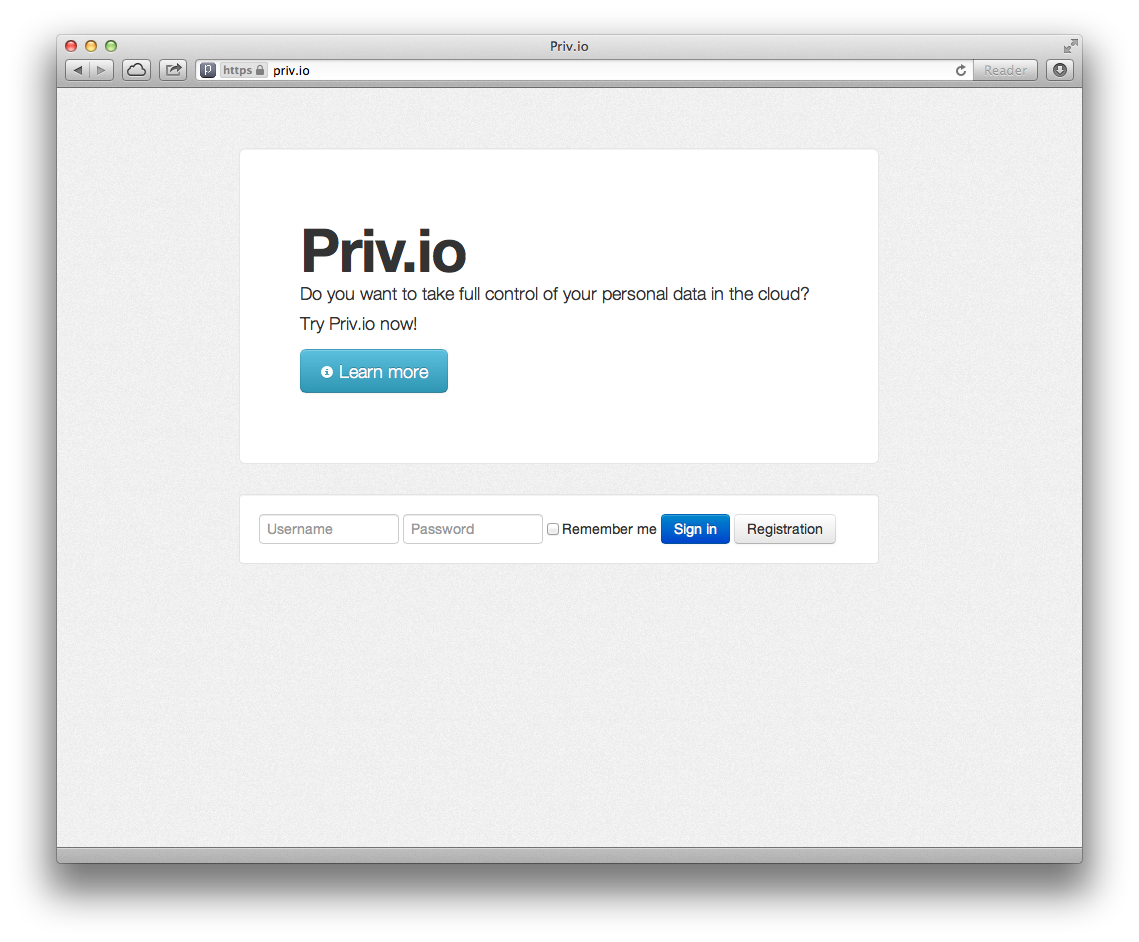
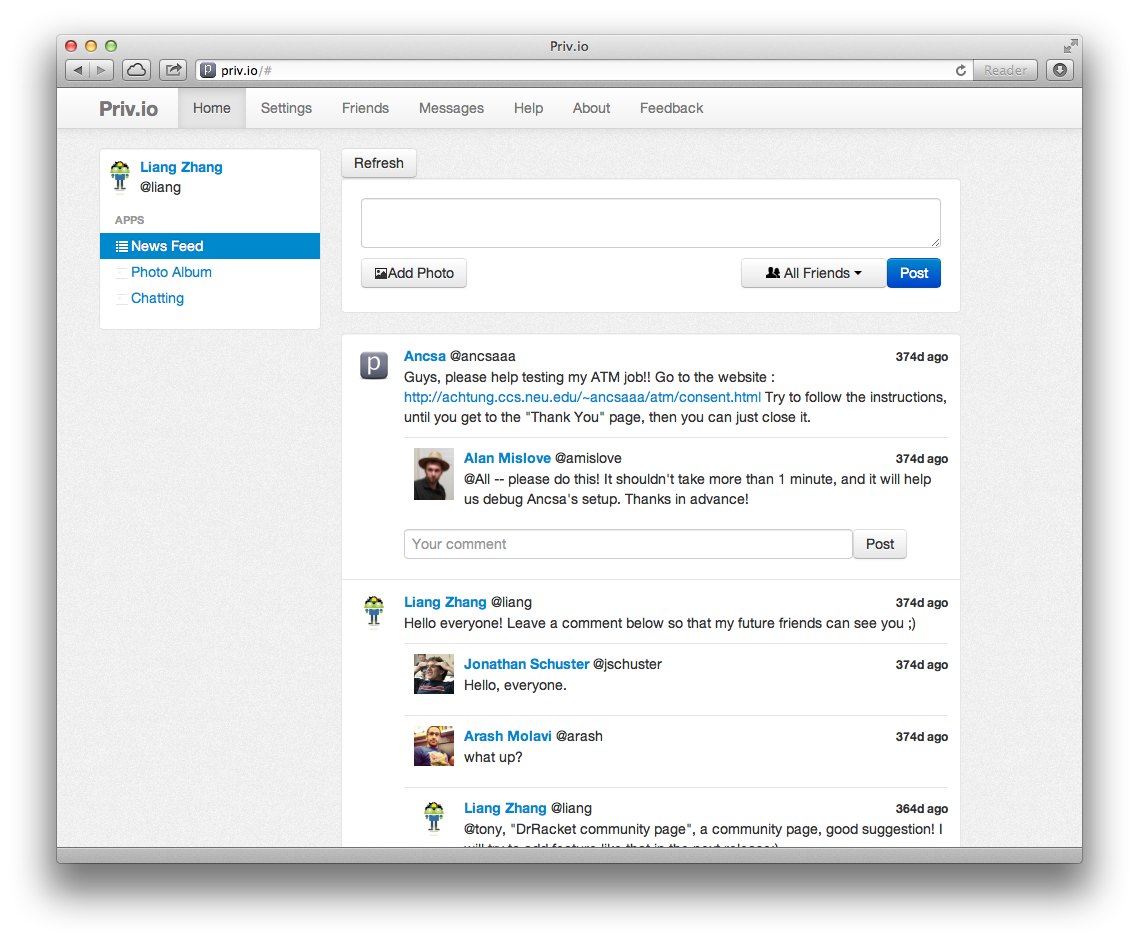
- Deploy within our department for two months
- 28 graduate students and professors
- 88 friendships, an average 3.82 friends per user
- Post 221 items
- It works on today's browsers (desktop and mobile)
Summary
- Confederated platform for building Web-based services
- Leverage:
- Cloud providers for storage, bandwidth, and messaging
- User’s Web browser for computation
- In Priv.io, users
- Retain control of their own data
- Keep data privately from the service provider
- Enjoy a highly reliable and available service
- Result:
- Work with today's web browsers
- Newsfeed: Facebook alike application
Thank You!
Questions?


